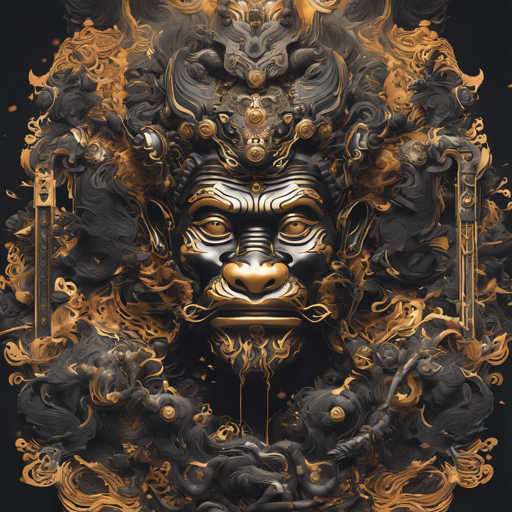Welcome to the world of text-to-image generation where creativity knows no bounds! Today, we’ll explore how to harness the power of LoRA (Low-Rank Adaptation) with the Black-Myth: Wukong model to create vivid and imaginative images.
Getting Started
To begin your journey into generating stunning visuals using the Black-Myth: Wukong model, follow the steps below. Ensure you have the necessary libraries installed, particularly PyTorch and Diffusers.
Required Setup
- Install PyTorch: Follow the official installation guide.
- Install Diffusers: Use pip to install with the command
pip install diffusers.
Code Explanation
Let’s break down the provided code with an analogy to a kitchen recipe. Think of your task as cooking a unique dish, and the code as the recipe.
Analogy of the Code
Imagine you’re a chef. You gather your ingredients, which in our case are the models and libraries. You then prepare your kitchen (by importing necessary packages), readying yourself to create something fantastic!
- **Gathering Ingredients**: You import the required libraries, like gathering flour, sugar, and eggs. Here, you use
torchandFluxPipelinefromdiffusers. - **Preparing the Recipe**: You load your base model with
FluxPipeline.from_pretrained(), similar to preheating your oven. - **Adding Flavor**: With
load_lora_weights(), you incorporate your special seasoning—adding depth to your dish. - **Blending Together**: You use
fuse_lora()to combine the flavors just right, ensuring the perfect taste. - **Cooking to Perfection**: Finally, you generate the image with the given prompt—your dish is ready to be served and enjoyed!
import torch
from diffusers import FluxPipeline
pipe = FluxPipeline.from_pretrained('black-forest-labs/FLUX.1-dev', torch_dtype=torch.bfloat16)
pipe.load_lora_weights('wanghaofan/Black-Myth-Wukong-FLUX-LoRA')
pipe.fuse_lora(lora_scale=0.3)
pipe.to('cuda')
prompt = "wukong, working in the office, holding a paper that writeen with damn, they dont need to work"
image = pipe(prompt, num_inference_steps=24, guidance_scale=5.0, width=768, height=1024).images[0]
image.save('example.png')Generating an Image
Now that we have our recipe all set, let’s move forward to generate an image with the Wukong prompt!
With the prompt defined as: wukong, working in the office, holding a paper that writeen with damn, they dont need to work, the model will conjure a visual representation based on this vivid description.
Troubleshooting Guide
If you encounter issues while executing the code, here are some troubleshooting tips to guide you:
- Error Loading Model: Make sure you’ve installed all dependencies correctly as described above.
- CUDA Errors: Check if your device has a CUDA-compatible GPU and if your CUDA drivers are up to date.
- Output Image Not Saving: Ensure you have write permissions for the directory you are saving the output image.
For more insights, updates, or to collaborate on AI development projects, stay connected with fxis.ai.
Accessing the Model
Download the model weights in Safetensors format and begin creating your own masterpieces. Check them in the Files versions tab.
Online Demo
You can also try your hand at generating images using the model at Liblib AI, which provides an online interface for a seamless experience.
Closing Thoughts
At fxis.ai, we believe that such advancements are crucial for the future of AI, as they enable more comprehensive and effective solutions. Our team is continually exploring new methodologies to push the envelope in artificial intelligence, ensuring that our clients benefit from the latest technological innovations.
Now, go ahead and create your own stunning visuals with Black-Myth: Wukong!

